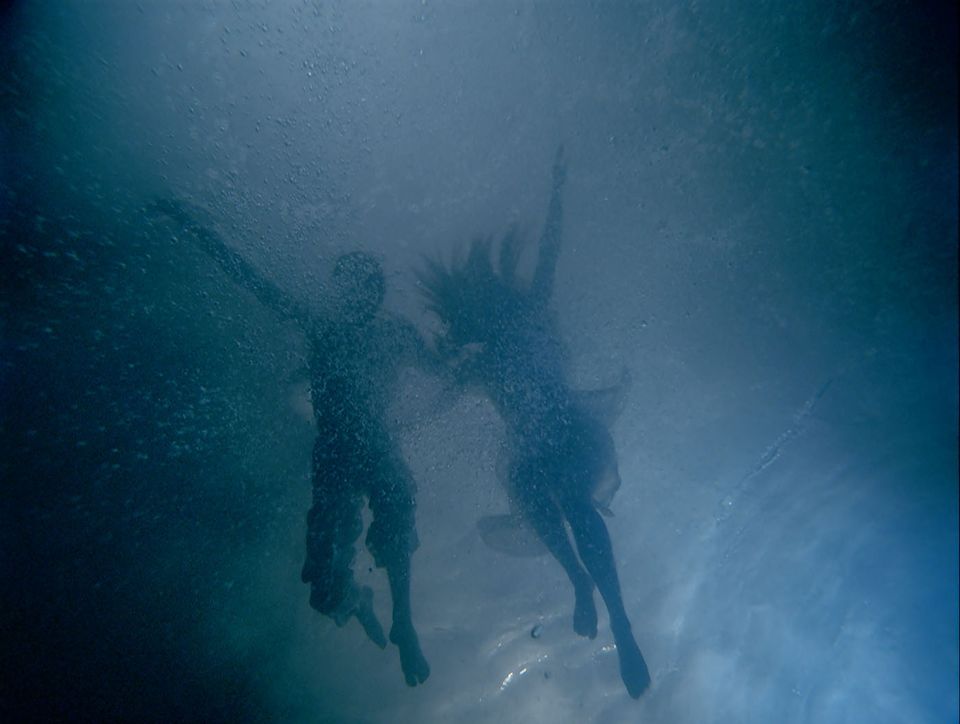

Most people, if they're going to fall anywhere in the vicinity of paradise, are likely to fall from it. Bill Viola's installation from 2005, The Fall into Paradise shows a couple who seem to have reversed the process and entered their own private Eden. Featured in its own magical, black box theater in Watch This! New Directions in the Art of the Moving Image on the museum's third floor, Viola's work is a meditation on time, love, life, and all things that sustain us. It starts out as a small point of light in the distance, the image morphs into two people held in an embrace. At that instant, the surface shatters and they burst through the void in an explosion of sound and light.
In a 2012 interview with the Guardian, Viola talked about the origins of his work and said, "Falling into a lake aged six, when I was on holiday in the mountains. I went straight to the bottom and saw the most beautiful world I'd ever seen: fish, shafts of light, plants waving in the breeze. I thought I was in heaven. I'd have stayed there had my uncle not pulled me up. That's why my art has so much to do with water — because I dream about going back to that place."
"That place" appears frequently in the artist's work, which regularly uses water, in addition to super slow motion. Over the years, Viola has created transformative works that have redefined and reinterpreted the art of the moving image, as well as what it means to exist in the world today. When he spoke at the museum in 2008 as part of the Clarice Smith Distinguished Lectures in American Art, he told us, "Creativity exists in all human beings and transcends time and place."



















